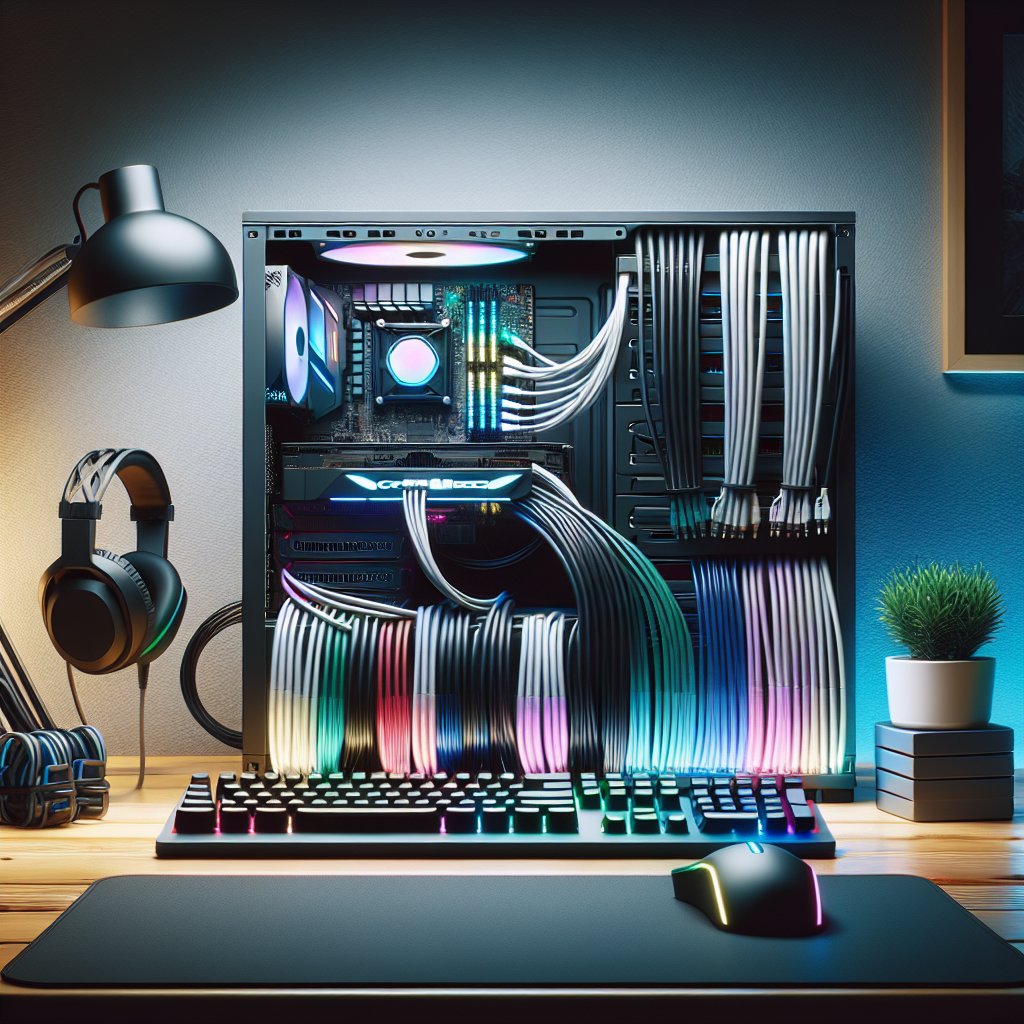When it comes to building a high-performance gaming PC, enthusiasts are often engrossed in selecting the best processors, high-resolution graphics cards, and top-quality cooling systems. However, one crucial aspect that’s sometimes overlooked is cable management. Cable management involves organizing and arranging the cables within a computer case to enhance airflow, aesthetics, and overall system functionality. In this article, we will explore the importance of cable management in gaming PCs and how it influences various facets of your gaming experience.
Key Benefits of Cable Management in Gaming PCs
The benefits of effective cable management in gaming PCs extend beyond just aesthetic appeal. Here are some of the key advantages it offers:
| Benefit | Description |
|---|---|
| Enhanced Airflow | Proper cable management ensures that cables are not obstructing airflow, which helps in maintaining lower system temperatures. |
| Improved Aesthetics | A well-organized system looks cleaner and more professional, which is pleasing to the eye. |
| Ease of Maintenance | Organized cables make it easier to identify and replace components when necessary. |
| Better System Performance | By reducing clutter, cables are less likely to interfere with system components, leading to smoother performance. |
| Safety | Proper cable management reduces the risk of cable damage, short circuits, and other potential hazards. |
Enhanced Airflow
One of the most significant benefits of effective cable management is enhanced airflow. Gaming PCs generate a lot of heat, and efficient cooling is essential to maintaining performance and longevity. Tangled cables can obstruct the airflow, leading to higher internal temperatures and reduced cooling efficiency. By organizing the cables neatly, you allow more room for air to circulate freely, which helps in keeping the system cool.
Improved Aesthetics
Aesthetics may not directly impact the performance of a gaming PC, but they do contribute to the overall satisfaction of the user. A clean and well-organized system is not only more pleasing to the eye but also reflects professionalism and attention to detail. This is particularly important for gamers who stream their sessions or showcase their setups.
Ease of Maintenance
Maintenance is an inevitable aspect of owning a gaming PC. Whether it’s upgrading components or troubleshooting issues, having well-managed cables can make the process considerably easier. With organized cables, access to various components becomes more straightforward, and identifying connections is less complicated. This can save a lot of time and effort in the long run.
Better System Performance
Cable management can also contribute to better system performance. Excessive cables can interfere with the movement of components such as the GPU fan, leading to reduced efficiency. By minimizing clutter, you ensure that all components can function optimally without any hindrance.
Safety
Safety is a critical yet often overlooked aspect of cable management. Tangled or improperly placed cables can lead to various hazards, including short circuits and cable damage. Well-managed cables reduce these risks, thereby ensuring a safer gaming environment.
Steps for Effective Cable Management
Now that we’ve discussed the benefits of cable management, let’s look at some practical steps to achieve it:
- Plan Your Layout: Before you start, have a clear idea of where each component will be located and how the cables will be routed.
- Use Cable Ties and Clips: These tools can help you bundle and secure cables, making them easier to manage.
- Opt for a Modular Power Supply: Modular power supplies allow you to use only the cables you need, reducing clutter.
- Utilize Cable Management Features: Many modern cases come with built-in cable management features such as grommets and tie points.
- Label Your Cables: Labeling can help you quickly identify cables, making future maintenance easier.
Common Mistakes in Cable Management
Even with the best intentions, mistakes can happen. Here are some common pitfalls to avoid:
- Over-tightening Cable Ties: This can damage the cables and reduce flexibility.
- Ignoring Airflow Paths: Ensure that your cable routing does not obstruct airflow paths.
- Neglecting Regular Maintenance: Periodically check your cable management to ensure it remains effective.
- Using Non-standard Cables: Stick to high-quality, industry-standard cables to avoid compatibility issues.
Conclusion
In conclusion, cable management is a vital aspect of building and maintaining a high-performance gaming PC. From enhancing airflow and aesthetics to improving system performance and safety, the benefits are substantial. By taking the time to properly manage your cables, you can ensure that your gaming PC not only looks great but also performs optimally. So, the next time you’re building or upgrading your gaming rig, don’t underestimate the importance of good cable management.

